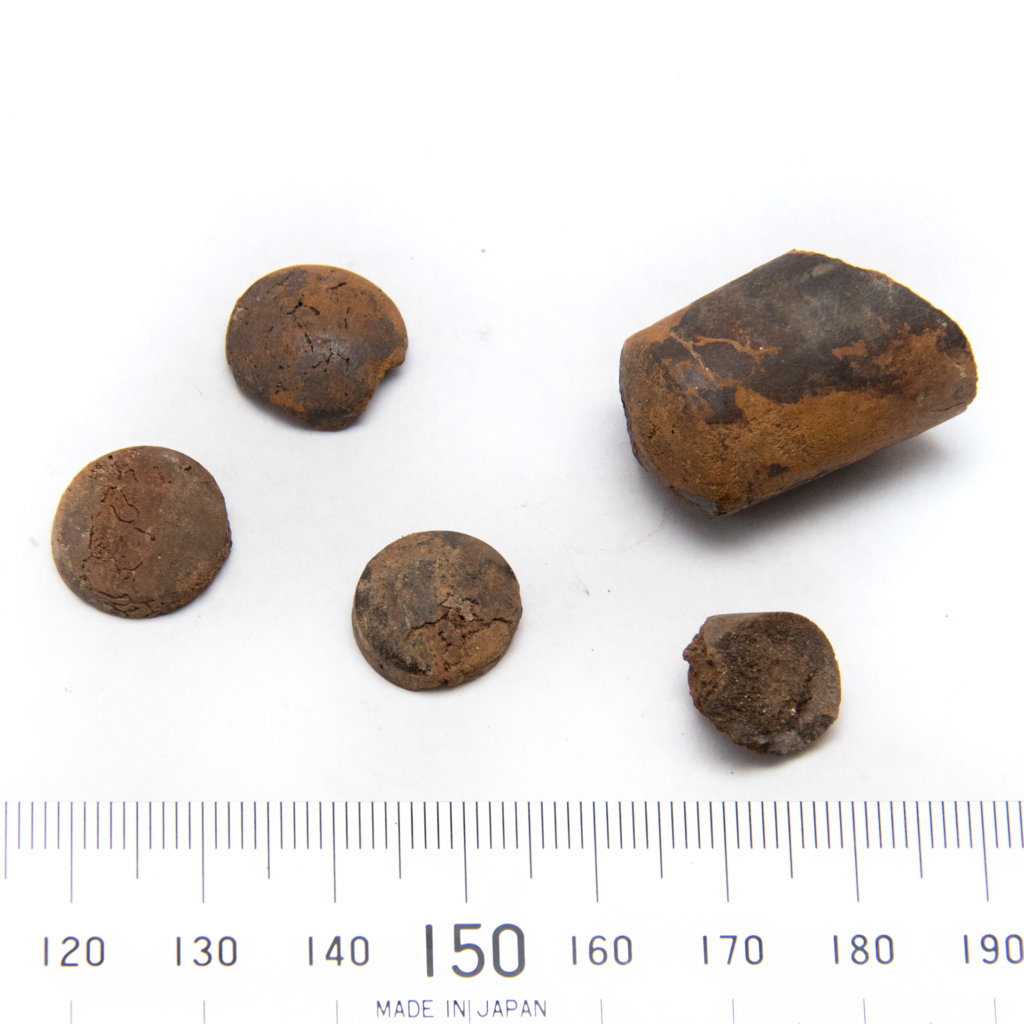In writing the most recent research article, Aviculopinna, I set up an area to photograph specimens. While having this setup available, I went ahead and re-photographed the first seven specimens in the fossil catalog.
Specimen CG-0001
John Harper identified this specimen as possibly being Orthotetes, a brachiopod. The preservation is in a mud-stone, discovered before I realized that limestone was available further down the stratum. I’ve seen several of these sea-shell patterns preserved throughout the rock. There is another to the right in the photo below, and more on the underside of the specimen. I have not spent as much time looking through this stratum since I’ve discovered the Brush Creek limestone.
Specimen CG-0002
I have found several specimens of Meekospira peracuta in Pine Creek limestone and above it. However, I have only found a few specimens so far in my rocks. They seem rare, but these black shales are not commonly explored locally. The Pine Creek locality I explore has countless specimens. I’d estimate 75% or so recovered specimens were either Meekospira or horn corals.

Specimen CG-0003
This is one of my more interesting shale specimens. There are two focal points. A bivalve, Palaeoneilo, and a currently unknown piece that may be a fish spine. I originally thought the extremely elongate piece was a fossilized plant piece. However, careful microscopic inspection reveals an interesting structure within.

Palaeoneilo, But Much Closer and Clearer
This macro view shows the entire specimen, and how tiny the bivalve is. The elongate specimen is up and to the right of the bivalve. When I first posted about this, I included microscopic views. However, I did not include focus stacking in my workflow. This allows me to photograph the specimen on several focal planes at once and combine them using software. These new views showcase a lot more detail than the originals.



Specimen CG-0004
This is my first identified cephalopod, a specimen of Metacoceras. Upon discovery, the specimen was a half torus shape, embedded in the side of a rock. I used a hammer to remove the larger piece from the boulder, and an air scribe to remove matrix from the specimen. This was one of my very first attempts at fossil prep. The top portion was composed of a softer rine material. This preserved the cephalopod camerae with a great amount of detail.
Specimen CG-0005
Nearly two thirds of a complete whorl of a Metacoceras. This has been a common and popular genus in local rocks, with eighteen of the first one hundred specimens in the catalog have been identified as such. Preserved septal wall attachments are visible at the surface of this mostly steinkern specimen.
Specimen CG-0006
This is a specimen of Mooreoceras preserved in the soft rine limestone material. This material is often a rust color, soft, and shrinks when water loss occurs. This was found by digging in this material between two solid limestone boulders These pieces came out, originally articulated. This appears to be a body chamber and four camerae. The siphuncle septal neck is visible in each piece under microscopic view. The specimen is exceptionally fragile.

Specimen CG-0007
This specimen was and still is a mystery. It may be the genus Euphemites, a member. Evidence for this includes ornamentation along the back of the specimen as a series of grooves in the direction of shell growth. This is one of my earliest specimens to get prepped using an air-scribe. I ended up making it more of an art piece, with the specimen perched on a piece of limestone. There is additional preserved fossilized life within, including the posterior end of the genus Aviculopinna.








